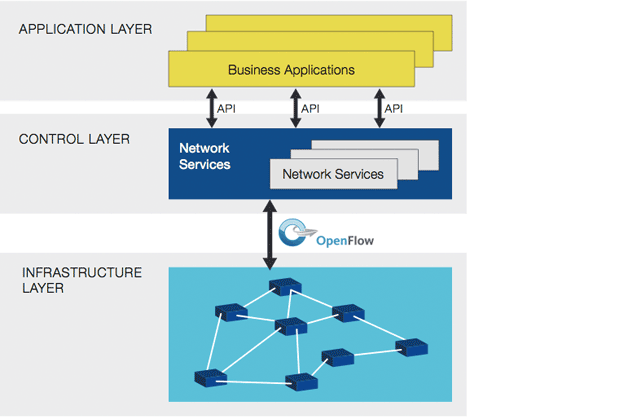
Software Defined Networking (SDN) has attracted a great deal of attention from service providers, enterprises, and industry associations. The technology holds the promise of bringing cloud-like agility and programmability to the network.
What is SDN?
Software-Defined Networking (SDN) is an emerging architecture that is dynamic, manageable, cost-effective, and adaptable, making it ideal for the high-bandwidth, dynamic nature of today’s applications. This architecture decouples the network control and forwarding functions enabling the network control to become directly programmable and the underlying infrastructure to be abstracted for applications and network services. The OpenFlow protocol is a foundational element for building SDN solutions.
SDN architecture is:
- Directly programmable: Network control is directly programmable because it is decoupled from forwarding functions.
- Agile: Abstracting control from forwarding lets administrators dynamically adjust network-wide traffic flow to meet changing needs.
- Centrally managed: Network intelligence is (logically) centralized in software-based SDN controllers that maintain a global view of the network, which appears to applications and policy engines as a single, logical switch.
- Programmatically configured: SDN lets network managers configure, manage, secure, and optimize network resources very quickly via dynamic, automated SDN programs, which they can write themselves because the programs do not depend on proprietary software.
- Open standards-based and vendor-neutral: When implemented through open standards, SDN simplifies network design and operation because instructions are provided by SDN controllers instead of multiple, vendor-specific devices and protocols.
How big is the SDN market? Check out this infographic put together by SDxCentral for some statistics around the expected growth, driving growth factors, and recent A &M activity.
Is SDN right for my network?
As with any new technology, SDN is not a good fit for every business. If you are moving applications to a new cloud deployment this is a good time to easily test and implement without interrupting day-to-day operations. If you are a large organization with many legacy applications that don’t require agility, it may not make sense for you to consider this type of technology for your network.
If you are considering SDN for your business, here is a good article from Gestalt IT that gives a quick rundown of what you need to know before implementing.
For help with determining the most efficient way to set up your infrastructure to achieve maximum results, here is an IT infrastructure sourcing ebook.




